Industry News
Meet Our Lion Ambassador of the Year Nominees!

Lion Glendon Sattler nominated by DG Wendetta Williams
Lion Glendon Sattler has been a driving force behind the Perryville Lions Club’s volunteerism with the KidSight program since 2019. Thanks to his leadership, screenings now reach all preschools and school districts in Perry County. Since 2019, 1,946 children have been screened, with more than 200 referred for further care, ensuring a brighter future for countless young lives.
Lion Mary Jane Noellsch nominated by DG Carol Deters
Lion Mary Jane Noellsch leads with heart and commitment. Since 2019, she has helped “Team Bowling Green” conduct 155 screenings for more than 8,400 children. Her nursing background brings exceptional expertise and compassion to every screening. Beyond the field, she has served on the KidSight board, strengthening the organization at every level.
PDG Leon Hove nominated by DG Frank Lambrecht, DG Michelle Foster, and the Saving Sight Board of Directors
PDG Leon Hove is a tireless champion for the Missouri Lions Eye Mission Foundation. Since joining Lions in 1977, Lion Leon’s work has helped expand access to eye care locally and internationally. From transporting box after box of eyeglasses to leading eye missions across Missouri, Panama, and Mexico, Leon’s commitment leaves a legacy. His role in establishing the Missouri Lions Eye Mission as a 501(c)(3) organization demonstrates his visionary leadership.
PDG Wayne Cunningham and Lion Susan Cunningham nominated by VCC Tina Anderson
PDG Wayne Cunningham and Lion Susan Cunningham exemplify service through action. Together, they have screened an incredible 18,500 children across preschools, schools, and daycares. Often traveling multiple days a week and covering two to three locations per day, they bring the Lions’ motto “We Serve” to life in a powerful way.
Karen Noel nominated by DG Mikey Beach
Karen Noel has forged a strong partnership with the Lions through her leadership in organizing community eye missions in the Kansas City area. Her vision also brought about a project to recycle eyeglasses at Catholic Charities’ new headquarters, helping to expand the Lions’ impact and sustainability efforts.
PDG Devin Struttmann nominated by CC Sherl Horton
PDG Devin Struttmann has been instrumental in growing the eye mission program statewide. His leadership and infectious enthusiasm have inspired many to join the cause, allowing more individuals, both children and adults, to receive the gift of sight.
Each of these remarkable Lions has strengthened our mission and touched countless lives along the way. We are proud to honor these nominees who give so much of themselves in service to others. They embody the very best of who the Lions are: compassionate, committed, and united in service to others. Congratulations to our 2025 nominees and thank you for helping change lives by saving sight!
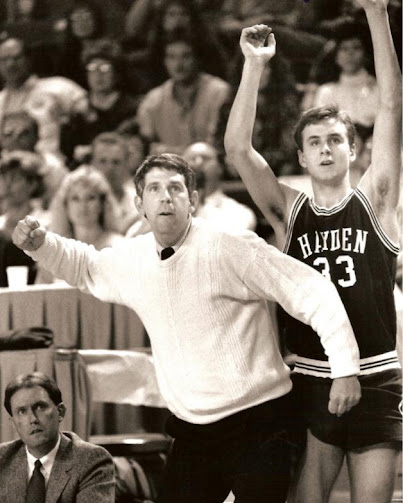
Ben’s Story: A Journey of Sight, Life, and Gratitude
For Ben, life has been full of surprises—some tough, others miraculous. His journey as a triple transplant recipient is a testament to the power of eye, organ, and tissue donation and the generosity of others.
During his years as a high school teacher, cross-country coach, and basketball coach, Ben could tell he was slowing down during his runs. What he thought were knee problems slowing him down turned out to be a far more serious condition. Ben learned he had an enlarged heart, which was managed with medicine for nearly two decades. As time passed, Ben’s heart was getting worse. During a checkup at the University of Kansas Hospital in 2010, doctors told him his heart wouldn’t make it another six months without a transplant. Ben was sent to St. Luke’s Mid-America Heart Institute, and just a few months later, Ben received a life-saving gift: a new heart from a young man named Matthew, who, Ben later learned, was studying to be a teacher. Matthew’s life had been cut short in a tragic car accident, but his gift gave Ben a second chance at life. “It’s impossible to put into words what that gift means,” Ben says. Ben, his wife, and Matthew’s mom have stayed close over the years, becoming good friends.
Almost a decade later, another health challenge surfaced. This time, it was his kidneys. After some tests, Ben’s doctor told him his kidneys were damaged and they weren’t going to last much longer. After nearly three years on the transplant list, a new kidney became available, saving his life once again. Ben reached out and thanked the donor family, the same way he did when we received his heart but never received a response. Then, a few years ago, Ben sent them a bouquet of flowers on Thanksgiving, a small way of saying thank you, and they sent back a picture of his kidney donor, a young man named Mitchell. “I’ve written letters to the donor’s family, hoping they know just how much their loved one’s gift has meant to me,” he shares.
In 2023, Ben’s vision began to fade. It started gradually, with his eyesight slipping in ways he didn’t quite notice at first. Driving at night became harder, and the world around him grew blurry. When his eye doctor referred him to a specialist, Ben learned he needed cataract surgery. That news alone was a lot to process but then came something he didn’t expect: a partial cornea transplant. “It shook me,” Ben admits. “I’d already been through two transplants, but I wasn’t expecting to hear that word again— ‘transplant.’ After the cornea transplant, Ben wrote to his donor’s family, just like he had before, and received a heartfelt letter back. His donor’s name was Becky, and her family’s kindness left a lasting impression on him. “Every transplant is a miracle,” Ben says.
“These gifts change lives—they changed mine.”
For Ben, these gifts aren’t just about him. They’ve given him precious time with his family: his four children and 11 grandchildren. “I think about all the moments I would’ve missed,” he says. “I would’ve been gone easy if that hadn’t happened. I could have been blind in one eye if that hadn’t happened. None of it would’ve been possible without these donors. They didn’t just save me—they gave me more time with my family.”
After retiring from teaching 10 years ago, he joined the Gift of Life program in Kansas City, visiting high schools to share his story and teach students about the importance of eye, organ, and tissue donation. “I tell my story because people need to hear it,” he explains. “Donation doesn’t just affect the recipient. It’s a ripple effect that touches entire families.”
This year, Ben hopes to honor his three donors with three roses in the Rose Bowl Parade’s Donate Life float—a way to celebrate the gifts that have shaped his life. For Ben, it was a meaningful way to celebrate their selflessness and the profound impact their gifts had on him. “It’s not just about me,” Ben says. “Their donations saved my life, gave me back my sight, and allowed me to be here with my family. Honoring them on such a big stage felt like the least I could do.” Ben’s journey reminds us of the extraordinary impact one person can have on another. Every day he wakes up, he carries the legacy of Matthew, Mitchell, and Becky with him. For Ben, life—and sight—is a gift he’ll never take for granted.
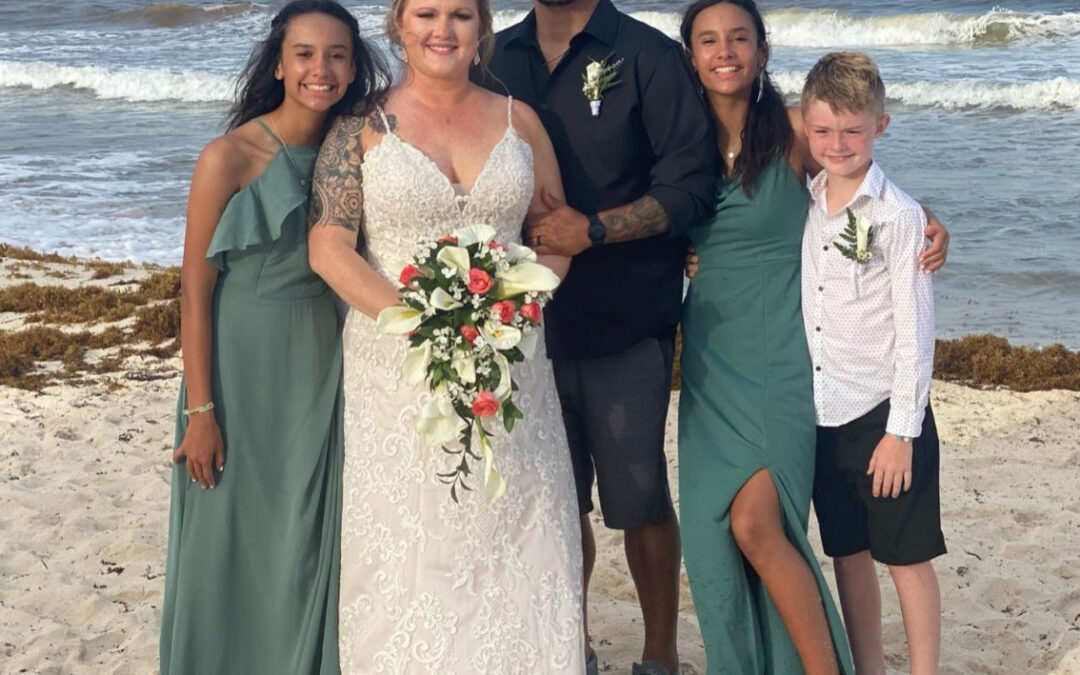
A New View on Life: Matt’s Cornea Transplant Journey
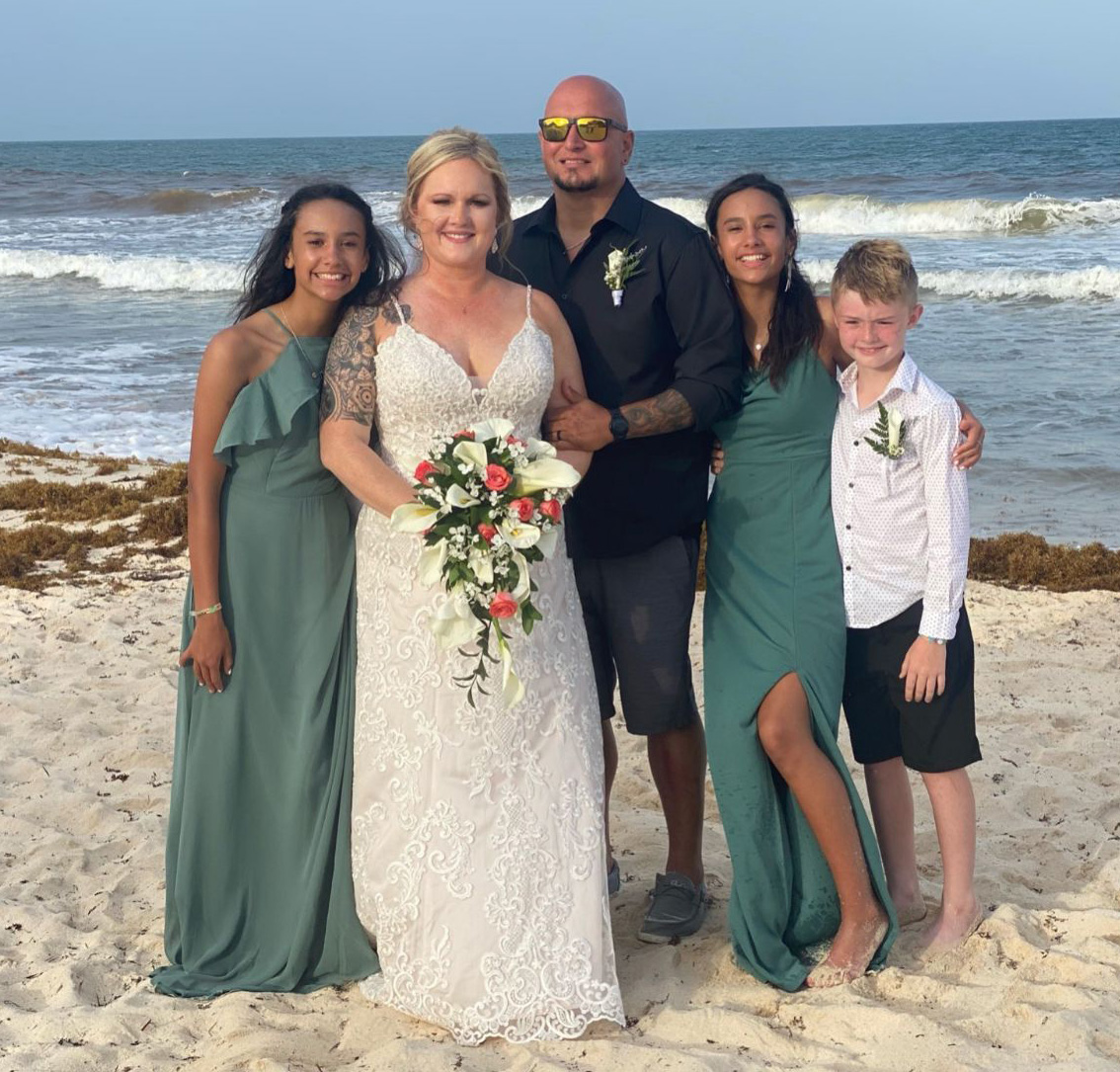
Matt and his family
For Matt, a cornea transplant meant the difference between fading vision and a world brought back into focus. Matt’s journey began unexpectedly after a seemingly minor ear infection ruptured as he slept. As he wiped his pillowcase, discharge from his ruptured eardrum, mixed with dirt beneath his contact, led to a rare fungal infection, causing severe vision impairment.
After initial treatment from his primary ophthalmologist, Matt was referred to Dr. Kenneth Goins at the University of Kansas Health System. “I learned about Saving Sight and a little about what could happen, and we talked about possibly looking for a donor,” Matt said. Tests revealed the fungal infection in his eye was progressing rapidly, and Dr. Goins informed him he’d need a cornea transplant to preserve any hope of sight. “They were concerned I could lose 100% of my eyesight, and I needed a transplant ASAP,” Matt recalled. Despite the challenges, he stayed focused on the possibility of regaining his sight.
Matt’s experience with transplants started years before his cornea surgery when he received a life-saving kidney transplant from a living donor. That experience helped shape his understanding of the power of eye, organ, and tissue donation, but it wasn’t until he faced potential blindness that he fully appreciated how vital even the smallest parts of the body can be.
“I didn’t know how much a single tissue could impact someone’s life until I was faced with losing my sight,” Matt said. “It’s incredible that two people have now given me this chance to live fully.”
For Matt, the cornea transplant stands as a reminder of the selflessness of donors and the profound difference their gifts make. Gratitude filled Matt’s heart as he spoke of the donor who made this possible.
“I am forever grateful,” Matt said. “Someone selflessly gave me the gift of sight, and it’s overwhelming. What did I do to deserve such love and compassion?”
The impact of his donor’s gift goes beyond Matt’s renewed vision—it’s a testament to human kindness and the power of eye, organ, and tissue donation. To those unfamiliar with the impact of donation, Matt has a simple message:
“You might be able to save someone’s life or change their world just by checking that box on your license,” Matt said. “It’s a chance to help someone in a way that goes far beyond what we can understand.”
As he continues to recover and adjust to his new vision, Matt hopes to honor his donor’s legacy by sharing his story and encouraging others to become registered donors.

Saving Sight and ARORA Partner to Expand Community Impact

Saving Sight, a national leader in eye banking services, announced that it has entered a new partnership to serve the state of Arkansas alongside Arkansas Regional Organ Recovery Agency (ARORA), the state’s federally designated organ procurement organization. The new partnership began October 7, 2024, and will focus on maximizing the gift of sight through eye donation and transplantation in Arkansas communities.
In this new partnership, Saving Sight will process and distribute ocular tissues for transplantation recovered by the ARORA team. Those tissues will be offered to surgeons performing sight-saving corneal transplants in Arkansas, regionally, and beyond.
As a northern geographical neighbor to ARORA, Saving Sight has a history of serving corneal transplant patients in Arkansas communities who see physicians in the Missouri Ozarks. In 2023, Saving Sight provided tissues for transplant to 69 individuals throughout the state of Arkansas – a number that will grow exponentially over the next year.
“A key ingredient of our work at Saving Sight is stewardship of the gift of donation,” said Tony Bavuso, CEO of Saving Sight. “We are thrilled to work with a like-minded partner like ARORA to ensure the impact of each Arkansan’s gift of sight is truly life-changing for others in their community and beyond.”
Mark Tudor, president and CEO of ARORA affirmed Bavuso’s sentiments adding, “We are very thankful for our partnership with Saving Sight for providing us with another avenue to honor every donation.” Tudor, who is also a donor family member, added “as a donor father whose daughter was a corneal donor, I can truly say that cornea donation provides families like mine an opportunity to change the world through a different lens.”
About Saving Sight
Saving Sight is a 501(c)(3) nonprofit organization that aims to change lives by saving sight. Founded in 1960, Saving Sight has become one of the nation’s leading eye banks and is focused on providing innovative solutions to its clinical partners. Headquartered in Kansas City, Mo., Saving Sight facilitates eye donation in Missouri, Kansas, and Illinois, impacting the lives of those both near and far through transplantation.
About ARORA
ARORA was established in 1987 as a nonprofit, accredited organ procurement agency. Serving 64 counties across the state, ARORA is headquartered in Little Rock and has a satellite office in northwest Arkansas. ARORA’s mission is to restore lives through the recovery of organs and tissues for transplant. Learn more at www.arora.org.
Transforming Lives: Celebrating the Impact of Saving Sight’s Charitable Grants in 2024
In 1960, Saving Sight began its journey of restoring vision through charitable vision programs, showing a commitment to community needs and a spirit of generosity. While the delivery of our programs has evolved, our legacy of giving continues to thrive through our mission partners. In 2021, Saving Sight’s board of directors established a board-designated quasi-endowment fund to support grants given to charitable organizations with a similar mission. We are proud to share the impact of grants given to four outstanding organizations in fiscal year 2023-2024: Missouri Lions Eye Mission Foundation, KidSight, Show Me Lions Eyeglass Recycling, and Mid-South Lions Sight and Hearing Service.
Missouri Lions Eye Mission Foundation – $7,000
Upon receipt of the grant money, the Missouri Lions Eye Mission Foundation purchased two Titmus V4 Vision Screeners. The total cost was $8,952.63, with the foundation contributing an additional $1,952.63. These state-of-the-art screeners have significantly improved the efficiency and accuracy of their vision screenings at mission events. To date, they have screened 239 individuals and have 17 more events planned, where they expect to serve hundreds or even thousands more.
KidSight – $43,000
KidSight utilized this grant for general operating expenses, enabling them to screen 39,943 children at 643 events and refer 3,674 children for potential vision disorders. Among those referred, 897 were at high risk for developing amblyopia. KidSight’s staff assisted 72 families with one-on-one referral navigation services, ensuring children received the necessary care. Additionally, partnerships with Zenni Optical and the Kansas City Free Eye Clinic (KCFEC) were established to eliminate barriers to care. The collaboration with Zenni Optical has provided glasses to eight families, while the mobile vision clinic with KCFEC served 238 students and provided free on-site vision exams to 11 students. These initiatives not only address immediate vision needs but also gather crucial data to improve KidSight’s screening program and advocate for early vision screenings.
Show Me Lions Eyeglass Recycling – $5,000
The Show Me Lions Eyeglass Recycling Center used the grant to enhance the safety, usability, and longevity of their facility. Major upgrades included new LED lighting in work areas, a new handrail for the primary entrance, exterior lighting for entrances and emergency exits, additional fire extinguishers, and new guttering. These improvements, partially completed by Lions volunteers, ensure a safer and more efficient environment for processing donated eyeglasses. The total cost of these projects was $5,566.76, with the grant covering a portion of the expenses.
Mid-South Lions Sight and Hearing Service – $5,000
Mid-South Lions Sight and Hearing Service expressed their gratitude for the support from Saving Sight, which enabled them to assist several Missouri residents with vision care. This fiscal year, they have seen 49 patients from Missouri and have paid a total of $6,924.00 for three patients’ bills. The grant from Saving Sight was instrumental in covering these costs, allowing Mid-South Lions to stretch their resources and provide essential care. The patients received significant financial assistance, demonstrating the impact these grants can make.
Saving Sight’s board of directors remains committed to supporting our mission partners in their efforts to restore vision and improve lives. At their most recent meeting in June 2024, Saving Sight’s board granted the following additional funds for the 2024-2025 fiscal year:
• KidSight: $41,500
• Missouri Lions Eye Mission Foundation: $16,500
• Missouri Lions Eyeglass Recycling Program: $2,000
The grants provided this year have empowered these organizations to expand their services, enhance their capabilities, and serve more individuals in need. We are proud of the collective impact we have made and look forward to continuing our legacy of giving in the years to come.
Saving Sight Welcomes New FY2024-2025 Board Members
At Saving Sight, our mission to change lives by saving sight is supported by a group of passionate and dedicated Board Members. They play a crucial role in guiding our efforts and bringing different perspectives and expertise to our organization. This year, we are thrilled to welcome four new members to our board. Each of these individuals brings unique experiences and a shared commitment to making a lasting impact on vision health. Join us in welcoming our new Board Members, PCC Ron Campbell, VCC Tina Anderson, Jonathan Smith, and CC Sherl Horton, to the Saving Sight family.

PCC Ron Campbell
Lions Multiple District M-4 Representative
PCC Ron Campbell returns to our board, bringing with him a wealth of experience from his previous terms (2017-2019) and his service on our honorary board. Representing Lions Multiple District M-4, PCC Ron is excited to start his first three-year term with renewed energy and dedication. His background in leadership within the Lions organization, including serving as the Missouri Lions Council Chair, uniquely positions him to contribute to our mission.
Reflecting on his journey, PCC Ron shared, “I’ve always been passionate about helping others and being part of the Saving Sight board allows me to contribute to a cause that truly changes lives. My goal is to help our organization grow and support other nonprofits with similar missions.”
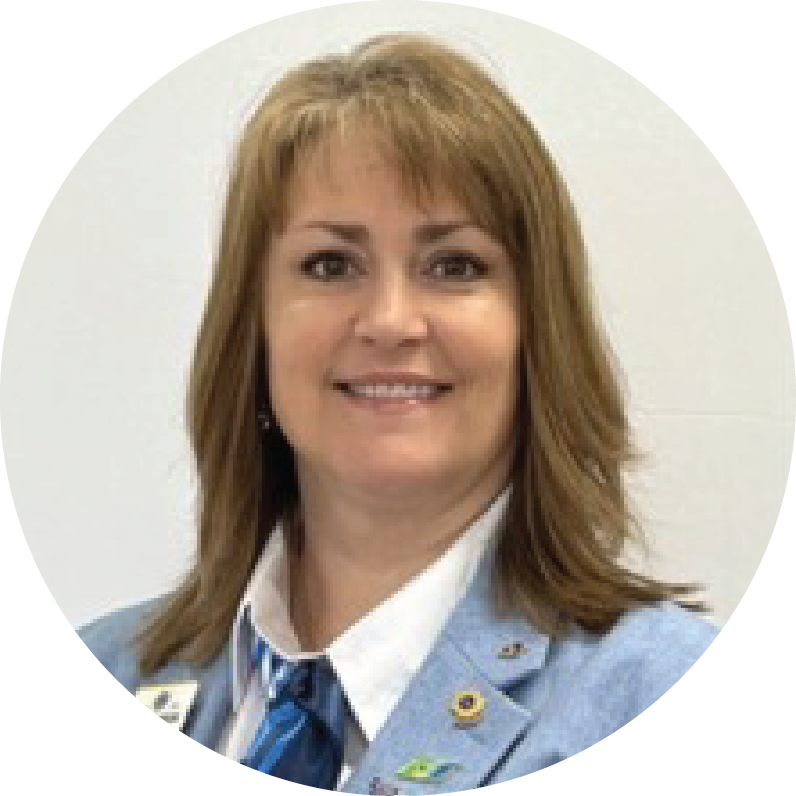
VCC Tina Anderson
Missouri Lions Vice Council Chair
Joining us for a one-year term as Missouri Lions Vice Council Chair, Tina Anderson brings a strong commitment to community service and a wealth of experience from various leadership roles within the Lions organization. Her dedication to improving the lives of those in need aligns perfectly with our mission at Saving Sight.
“I’ve always found joy in serving my community,” VCC Tina said. “I’m excited about the opportunity to work with Saving Sight. It allows me to contribute to a mission that’s close to my heart. I’m excited to learn and see how I can help further our impact on those in need of vision care.”
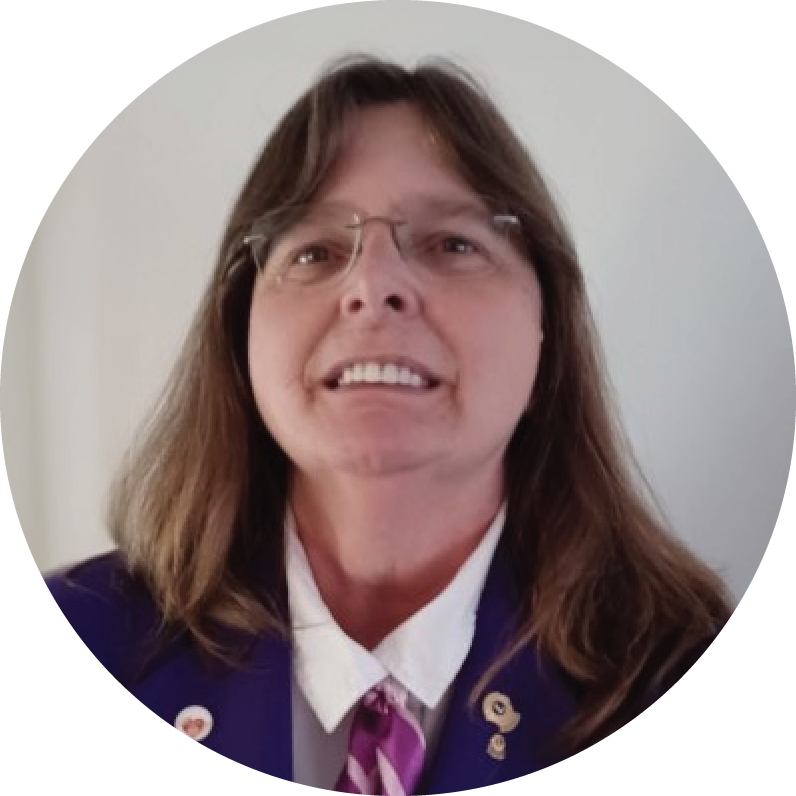
Missouri Lions Council Chair
CC Sherl Horton joins the board as the Missouri Lions Council Chair for a one-year term. With a background in financial management, Sherl has served in various roles, including treasurer, secretary, and district governor within the Lions organization. Her extensive experience in these positions equips her with the skills and knowledge to contribute significantly to our board and our mission.
CC Sherl highlighted her enthusiasm for the future, stating, “We’ve seen such impressive growth and impact with Vital Tears. I’m really excited about the potential for furthering our mission and expanding our reach at Saving Sight.”
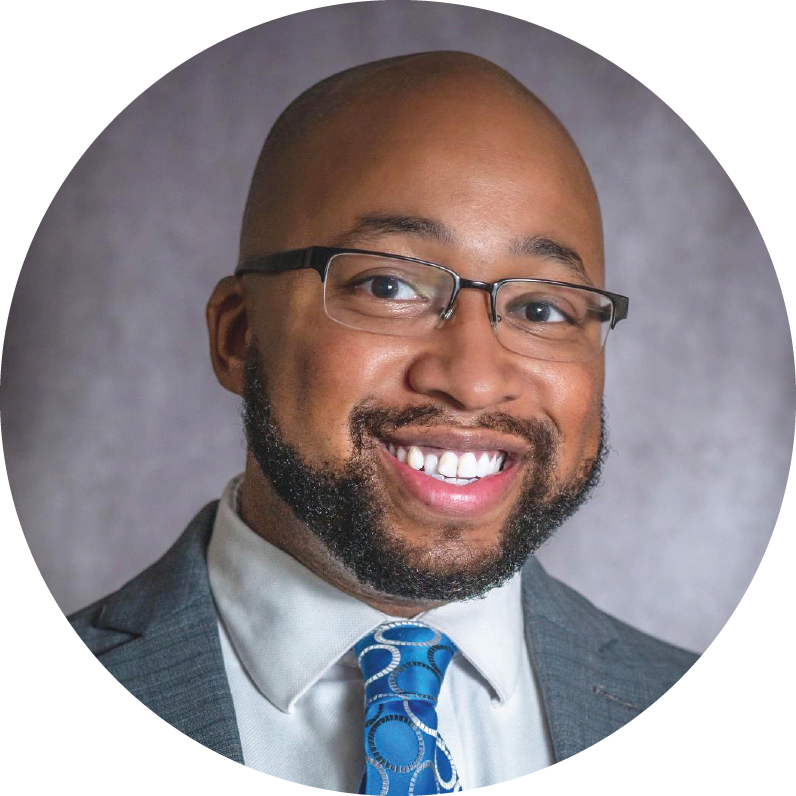
Jonathan Smith
Community Board Member
Jonathan Smith, a non-Lion community board member, has a background in public health and a passion for health equity. Having grown up in Detroit and moved to Kansas in 2013, Jonathan has been actively involved in federally qualified health centers, focusing on ensuring that underserved communities receive the care they need.
Jonathan shared his perspective, “Empowering individuals and ensuring equitable access to healthcare resources has always been my focus. At Saving Sight, I hope to contribute to increasing awareness and education about cornea donation, which is often overlooked.”
Jonathan is eager to learn and collaborate with the board, bringing fresh perspectives and innovative ideas to help Saving Sight fulfill its mission.
We are excited to welcome PCC Ron, VCC Tina, CC Sherl, and Jonathan to our board. Their experiences and shared dedication to our mission will undoubtedly enhance our efforts to change lives by saving sight. At Saving Sight, we believe that our strength lies in our ability to work together, leveraging the skills and passions of our team to make a difference. With the addition of these individuals, we are confident that we will continue to advance our mission and create a brighter future for those we serve. We look forward to the innovative ideas, collaborative spirit, and unwavering commitment they will bring to our organization. Welcome to the team, PCC Ron, VCC Tina, CC Sherl, and Jonathan!
Saving Sight Welcomes New Medical Director Team
Medical directors play an essential role at eye banks like Saving Sight by providing advice and oversight of medical operations. They ensure the eye bank operates in compliance with the Eye Bank Association of America’s medical standards and other regulatory standards from the Food and Drug Administration.
On July 1, Saving Sight welcomed Dr. Michelle Boyce and Dr. Chris Ketcherside to its medical director team. These new additions complete a team of four, with Drs. Boyce and Martin de la Presa serving as associate medical directors, and Drs. Ketcherside and Gregg Berdy as medical directors. This update follows the announcement of longtime medical director Dr. Joseph Tauber’s planned retirement from the Saving Sight team. Dr. Tauber will continue his association with Saving Sight as chief medical officer at Vital Tears.
Join us in learning more about the Saving Sight medical director team!

Dr. Michelle Boyce, Associate Medical Director
Moyes Eye Center
Dr. Michelle Boyce is a board-certified ophthalmologist specializing in cataract surgery, refractive surgery, and corneal eye disease at Moyes Eye Center in Kansas City. She received her undergraduate education at Drury University in Springfield, Missouri, and graduated with honors from St. Louis University School of Medicine. Dr. Boyce completed a one-year internship in internal medicine and a three-year ophthalmology residency at the University of Kansas Medical Center. She then completed a fellowship in cornea, external disease, and refractive surgery at the University of Iowa Carver College of Medicine.
Looking forward to her new role, Dr. Boyce stated, “My hope is to maintain excellent care and further our reputation among cornea specialists and patients while advancing our work in new and innovative ways.” She is also the first woman on Saving Sight’s medical director team and expressed her hope to be “the first of many.”

Dr. Martin de la Presa, Associate Medical Director
Grene Vision Group
Since 2022, Dr. Martin de la Presa has played a key role at Saving Sight, serving as associate medical director. Beyond his role at Saving Sight, he is an ophthalmic surgeon specializing in cornea, cataract, refractive, and glaucoma surgeries at Grene Vision Group in Wichita, Kansas. He completed his fellowship in cornea and external disease at the Cincinnati Eye Institute and his residency in ophthalmology at the University of Minnesota.
In reflecting on his role, Dr. de la Presa emphasized the crucial connection between physicians and eye banks, noting, “Physicians act as the voice for both patients and donors, ensuring that every tissue donation is utilized fully and reaches those in greatest need.”

Dr. Chris Ketcherside, Medical Director
Kansas City Eye Clinic
Dr. Chris Ketcherside, based at the Kansas City Eye Clinic, specializes in LASIK and refractive surgery, cataract and premium lens implant surgery, cornea disorders, and cornea transplant surgery. He earned his undergraduate and medical degrees from the University of Missouri, followed by an ophthalmology residency at the University of Virginia and a fellowship at the Rocky Mountain Lions Eye Institute at the University of Colorado, focusing on cornea and refractive surgery.
Dr. Ketcherside discussed the role of medical directors in fostering innovation within ophthalmology, stating, “We bridge the clinic, the operating room, and the patient themselves. We bring current issues and potential needs to the eye banking community, helping us work together to anticipate and resolve challenges.”

Dr. Gregg Berdy, Medical Director
Ophthalmology Associates
Dr. Gregg Berdy has been a leader at Saving Sight since he first joined the board of directors in 1992, later serving as co-medical director with Dr. Tauber. A board-certified, fellowship-trained ophthalmologist specializing in cornea and external disease and ocular allergy at Ophthalmology Associates in St. Louis, Dr. Berdy has been a principal investigator for at least fifty FDA trials and has published extensively in ophthalmic literature. He has also served as president and a board member for the Missouri Society of Eye Physicians and Surgeons.
Reflecting on the impact of eye donation, Dr. Berdy remarked, “What you must remember is that each transplant originates from a person and family who chose to donate, which is at the heart of everything. Every case reminds me of how special that is.”
We look forward to working closely with this dedicated group of professionals to ensure that Saving Sight is meeting our community’s needs in the most safe and effective way possible.
Honoring Chad: A Mother’s Tribute to Love and Legacy

Tragically, Chad’s journey came to an end in January 2017 due to a car accident. Through her sorrow, Linda found peace in the opportunity to honor Chad’s memory through organ donation. Linda shares, “Chad would do anything he could to help somebody.” Chad’s selflessness manifested in his decision to register as an eye, organ, and tissue donor, a choice that would impact countless lives.
For Linda, Chad’s donation brought awareness and understanding. “I signed my driver’s license every time, knowing it was the right thing to do,” she says. “But I didn’t fully comprehend the extent of donation until Chad’s passing.” Through Midwest Transplant Network, Linda discovered the ripple effect of donation, extending far beyond organs to include tissues, bones, and corneas. “I had no idea that you could donate corneas or tissue,” she said. “It’s been eye-opening to learn how donation can touch so many lives.”
Chad’s legacy of giving continues to shine through an annual wiffleball tournament, a fitting tribute to his cherished childhood memories. Linda shares, “In September 2016, he was here with one of his kids and a couple of the other grandkids, and they were all outside playing wiffleball, and he said to me, ‘Mom, you know that this is my fondest memory growing up.’” Linda began to wonder what she could do to honor Chad and his legacy. “I didn’t want to do like the normal 5K because he didn’t run. I wanted it to be about him and came up with a wiffleball tournament.” What began as a small gathering with about eight teams on one field has blossomed into an annual community-wide event with 24 teams spread across eight fields.
As Linda navigates grief and healing, she finds comfort in connecting with recipients of Chad’s gifts. From an elderly woman regaining mobility to a hiker conquering new heights, each story reaffirms the impact of eye, organ, and tissue donation.
In honoring Chad’s legacy, Linda embraces a message of resilience and hope. “His story is one of triumph and tragedy,” she reflects. “I choose to focus on the positive, carrying forward his spirit of giving with every letter, every conversation, and every act of kindness.” As Linda and her family continue to honor Chad’s memory, they invite others to join them on the journey of donation. “Chad gave 100% of what he could give,” Linda emphasizes. “His legacy lives on in the lives he touched, inspiring us all to embrace the gift of giving.” In commemorating Chad’s spirit of generosity, Linda reminds us that even in moments of loss, love endures, and the legacy of giving transcends time.
Meet Our Lion Ambassador of the Year Nominees!

Lion Joann Pruitt, nominated by DG Marilynn Reaves
Lion Joann Pruitt of the Fort Leonard Wood Lions Club is a highly dedicated volunteer for her Lions club and her district. She’s served 1,661 people in 24 service activities, adding up to 110 service hours devoted to changing lives by saving sight. Perhaps the area most impacted by Lion Joann’s work is with our partner organization, KidSight. Lion Joann has screened over 1,000 children with the program, impacting the lives of children and families in her community.
Lion John Berger, nominated by DG Paul Carr
Lion John Berger’s impact resonates deeply throughout Missouri as a Kids Sight Volunteer. His commitment to children’s vision screening began years ago, igniting a mission to ensure no child falls through the cracks due to vision issues. From school screenings to district-wide advocacy, John tirelessly promotes Kids Sight, inspiring teams and volunteers to join the cause. His warmth and patience shine during screenings, easing children into what might be their first eye examination. John’s dedication extends beyond children, as he now extends his efforts to senior citizens at health fairs. His unwavering commitment to ensuring access to vision care for all ages exemplifies true service and compassion.
PDG Lyn Porterfield, nominated by DG Sherl Horton
PDG Lyn Porterfield’s passion for humanitarian service is evident through his instrumental role in establishing and participating in eye missions. His tireless efforts to set up and attend these missions have transformed his dream into reality, providing essential vision care across the state. Lyn’s dedication extends beyond mission logistics; he meticulously cleans and reads hundreds of glasses annually, ensuring resources are maximized to benefit those in need. His unwavering commitment to improving access to vision care embodies the spirit of Lionism. Lyn’s selfless service and enduring contributions to the community have left an indelible mark, earning him profound appreciation and admiration from colleagues and beneficiaries alike.
PDG Devin Struttmann, nominated by the Saving Sight board
PDG Devin Struttmann’s dedication to vision care extends far and wide. As a vital member of the Missouri Lions Eye Mission Foundation, Devin was pivotal in expanding their services beyond the United States to include missions within Missouri. While continuing missions abroad, his focus on local outreach ensures that communities in need receive vital vision care resources. Devin’s involvement with Saving Sight underscores his commitment to serving the less fortunate, evident through his active participation in his local Lions Club, district, and state Lions initiatives. His unwavering dedication to Saving Sight drives his involvement in vision care advocacy.
PCC Brad Baker, nominated by DG Phil Krebs
PCC Brad Baker epitomizes boundless service as CEO of MidSouth Lions Sight and Hearing Services since 1995. Recognized by the Saving Sight board and Missouri Lions, his impact extends worldwide. Covering MO-AR-MS-West TN, Brad ensures access to eye care regardless of financial constraints. Guided by the mission “A Miracle a Day,” he aligns MidSouth Lions’ mission with Saving Sight’s goal of “Changing Lives by Saving Sight.” From organizing Cataract-A-Thons for dozens to facilitating care for individuals worldwide, Brad’s devotion to preserving and enhancing sight shines through. Collaborating with Baptist Memorial Hospital and the Hamilton Eye Institute, his tireless dedication to improving lives through vision care reflects a profound commitment to humanitarian service.
PDG Bill Foglesong, nominated by CC Harold Spire
PDG Bill Foglesong embodies the essence of altruism and dedication in promoting eye health and preventing blindness. His commitment shines brightly through volunteering at Donor Days at Walgreens, where his tireless efforts make a tangible impact on the community. Moreover, PDG Bill’s altruism extends beyond his contributions as he actively involves his wife, Lisa, in this vital cause. Together, they have participated in raising a Leader Dog puppy and have generously volunteered their time and expertise, amplifying the impact of their efforts.
PDG Mark Schaeperkoetter, nominated by DG Ed Bierbower
PDG Mark Schaeperkoetter’s dedication to children’s vision health is evident through his recent screening of 60 third and fourth-grade students at Eldon Lower Elementary. His proactive approach ensures early detection and intervention for potential eye issues, with seven children referred to an optometrist for further evaluation. PDG Mark and Lion Judy’s ongoing commitment to screening young school children across mid and southern Missouri highlights their selfless dedication to community service. Through their efforts, they contribute significantly to the well-being of children, potentially averting severe eye problems in the future. Mark’s passion for ensuring every child receives the care they need underscores his exemplary leadership and humanitarian spirit within the Lions community.
Effects of Eye Bank Donor Age Expansion on Corneal Endothelial Cell Density and Surgeon Tissue Acceptance

Dr. Ayobami Adebayo

Dr. Roy Chuck
In recent years, advancements in medical research have pushed the boundaries of what was once considered feasible in the field of ophthalmology. One such study observed the effect of the expansion of eye bank donor age on corneal endothelial cell density and surgeon acceptance rate of those tissues. Donor characteristics, endothelial cell density, and acceptance of tissues for use in surgery were compared between age groups in five-year intervals. The aim was clear: to assess how this expansion would influence the availability of corneal tissue for transplantation and challenge existing biases against older donors. Saving Sight was proud to partner with Dr. Roy Chuck and Ayobami Adebayo, among other researchers, to provide the corneal tissue used during this study.
This single-site study featured 25,969 corneas from eye bank donors from 2018 – 2022 between the ages of 2 and 75. At the beginning of 2022, the donor age limit was increased to 80 years old, thus allowing donated tissue from older donors to be used in transplants. The age limit increase allowed 411 more cornea donations, which led to 208 more transplants. The average endothelial cell density for the 71-75 age group was 2,349 cells/mm2, compared to 2227 cells/mm2 in donors aged 76-80. The difference of 122 cells/mm2 doesn’t seem like much, but the study saw that donors aged 71-75 had a 38% surgeon rejection rate, while those aged 76-80 had a 48% surgeon rejection rate.
There could be multiple reasons for the difference in surgeon rejection rate, but one could be age bias. Traditionally, corneas that come from older donors are looked at as not viable, but this study showed that corneas from older donors are still very viable for transplant. While there isn’t a shortage of corneas for transplant in the United States, there is a global shortage, resulting in patients in other countries waiting on the transplant list for months.
“If we can expand the age pool to increase and even get some more donations, that will increase transplants,” Adebayo said. “And I think there’s just a lot more room for growth in that area.”
This study is important for the future of ophthalmology and eye banks because there is a cornea shortage in other countries. By increasing the donor age limit, more corneas will be available for transplant globally. Expanding the donor age limit and using those tissues in surgery can give the gift of sight to many more people in need across the globe. Potential age bias isn’t the only factor in the difference in surgeon rejection rate, but it does show that more work needs to be done.
“So, no matter what you do, there’s still a bias against age and many things that we do in life, and that bias never disappears,” Chuck said. “…We can do one of two things. We can work to death to change everyone’s mind just by talking to them. It’s very difficult to do, and it’s much easier for us to generate data, and that’s what we’re doing. That’s the whole basis of research, you know, change thought by proving it with data.”
As researchers navigate the complexities of eye, organ, and tissue donation and transplantation, they remain committed to ensuring equitable access to sight-restoring treatments for all. Increasing the donor age limit will increase viable donor tissue for transplant, allowing those in underserved areas to receive the gift of sight. The journey to redefine how corneal donations are handled isn’t solely about science; it’s a moral duty with the chance to change lives by saving sight.
Get the Latest in Your Inbox
Sign up below to receive Saving Sight’s quarterly round-up of industry news straight to your inbox. We will never share your information with third parties and you may unsubscribe at any time.


